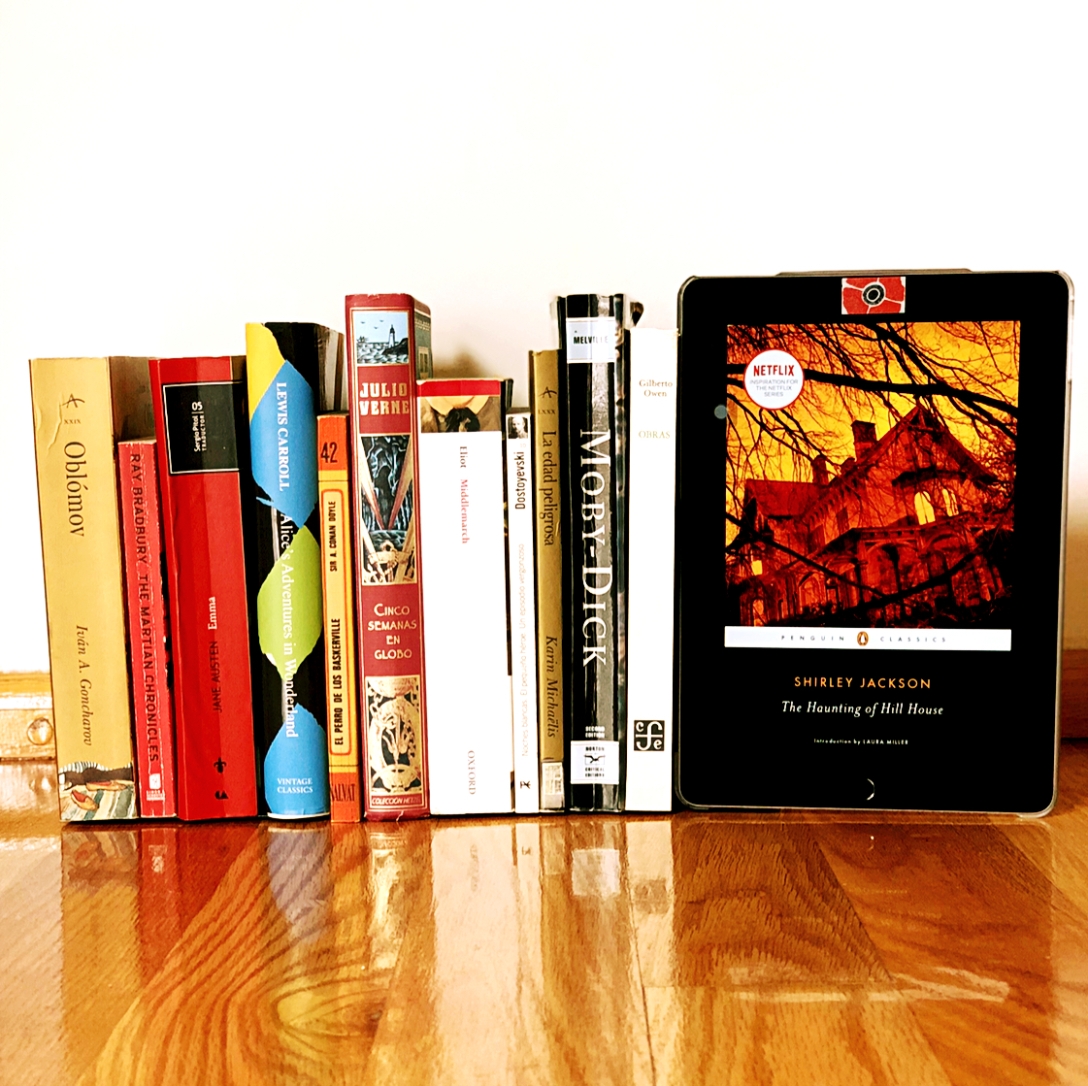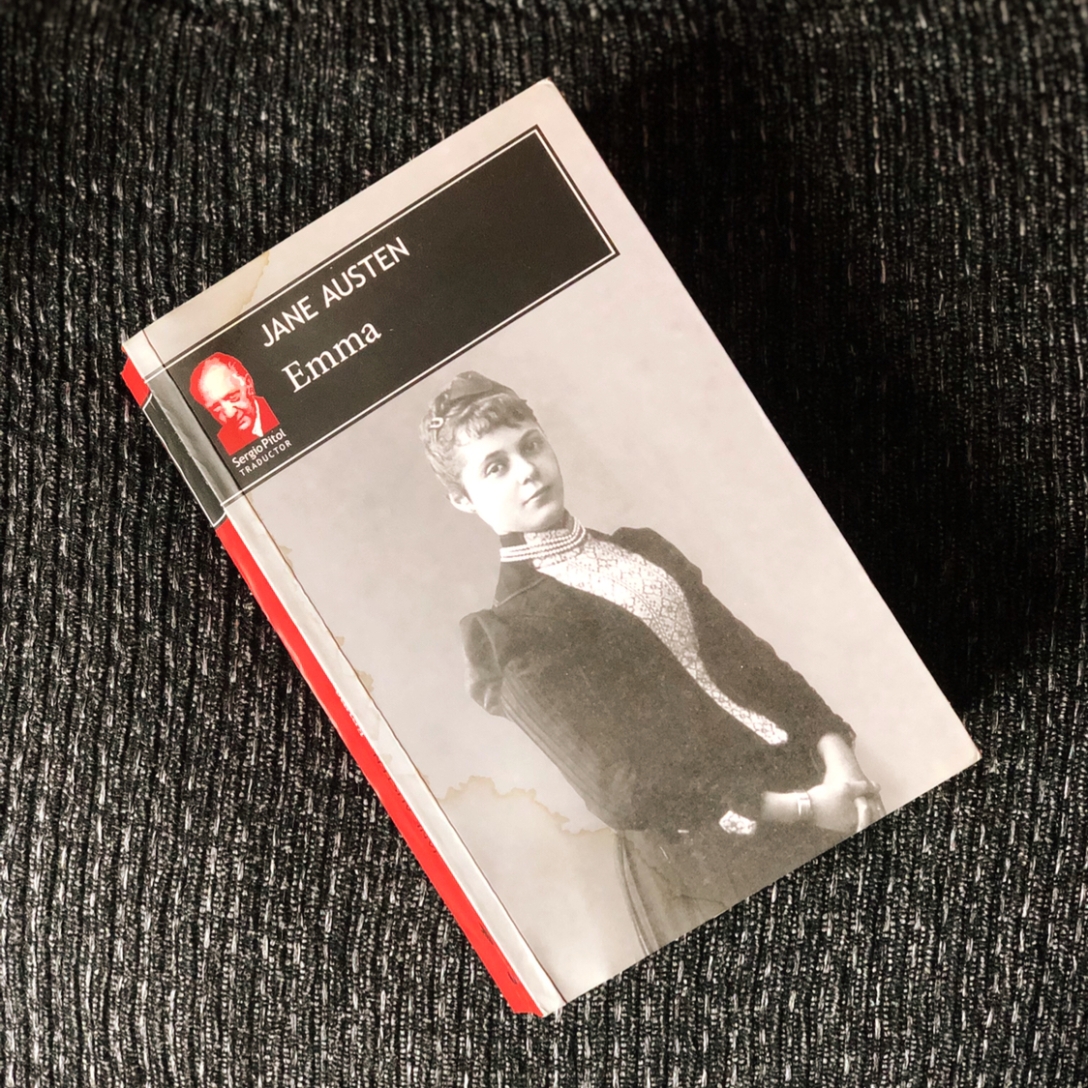For August Monthly Motif Challenge we were supposed to read a book that has won a literary award or a book written by an author who has been recognized in the bookish community. And I chose The Martian Chronicles, by Ray Bradbury, who won dozens of awards and prizes.
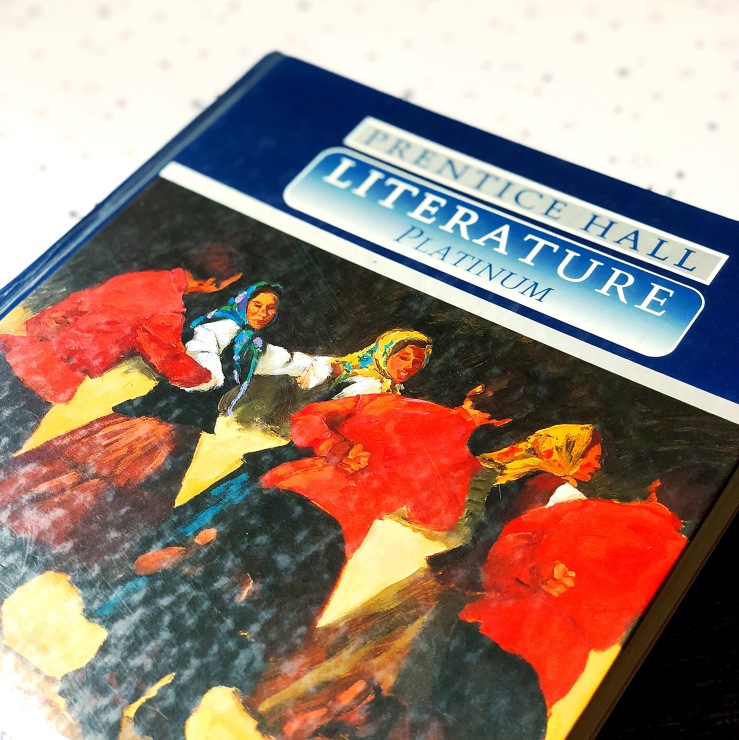
I love Ray Bradbury. The first time I read him I was probably 11 or 12 years old. It was one of those amazing literary moments. In my English Literature class, with my favorite teacher, we read “By the Waters of Babylon”, by Stephen Vincent Benét. Our book was amazing, and I wanted to read everything, especially from that section of the book called “Setting”. After the shock that was “By the Waters of Babylon” we read “There Will Come Soft Rains”, by Ray Bradbury. It was like an intellectual slap. I had read all my life, but right then and there I was having one of my first real literary discussions. And it was too much.
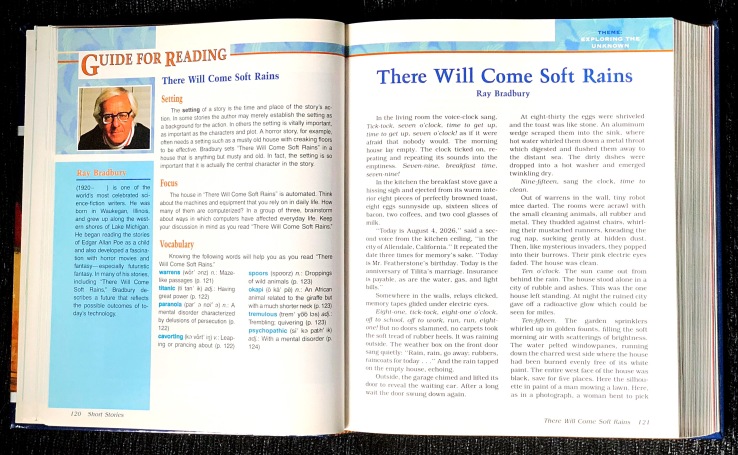
Over the years I read a lot of Bradbury, Fahrenheit 451(on of my favoritest books of all time), The Mummies of Guanajuato, The Sound of Thunder, The Illustrated Man, and a bunch of other short stories for school… but for some reason I had never read The Martian Chronicles. I actually didn’t know my beloved “There Will Come Soft Rains” was part of it.
So when I had to chose a 20thCentury classic and I saw The Martian Chronicles, ―published in 1950― in my shelf, crying in darkness, I decided to give it a shot. My edition has a stamp that says “National Book Award, Distinguished Contribution for American Letters”, so it also fit in the Monthly Motif Challenge.
I’m so glad I finally decided to read this book… I love science fiction, and I need to read more.
This is a book that narrates in loosely connected and chronological short stories the colonization of Mars. It starts in January, 1999, with a beautiful beautiful depiction of the “Rocket Summer”. How it was winter when all the rockets took-off, so —because of the engines—it felt as hot as summer. Then we go directly to Mars, we meet the Martians, with their remarkable powers of telepathy and their civilization.
The earth expeditions start arriving and failing, but in the end, they actually succeed. It’s terrible to see the colonization thirst of the white man. Destroying everything. Appropriating everything. Erasing everything. But things start going worse on Earth, so the settlers actually have to come back, leaving a few behind. But back on Earth there are others who, seeing the nuclear devastation, had other plans.
The Martian Chronicles is a fantastic book. One of my favorites now. There are so many beautiful and harrowing passages… It’s scary. We actually already passed the date of the nuclear war (2005), and we are very close to the end of the book 2026, thankfully we’re not close to those events. But the truth is we are closer. One could think that human race evolves, but reading this and knowing what’s happening in our world (Trump, Kim Jong-un, Putin, Elon Musk…) there’s no way I can’t believe this is a possible future. Terrible and sad.
There are quite a few jewels in The Martian Chronicles. “Night Meeting” and “Usher II” come to mind immediately. There are so many things I underlined and marked… It is definitely a book that will be with me forever.
//
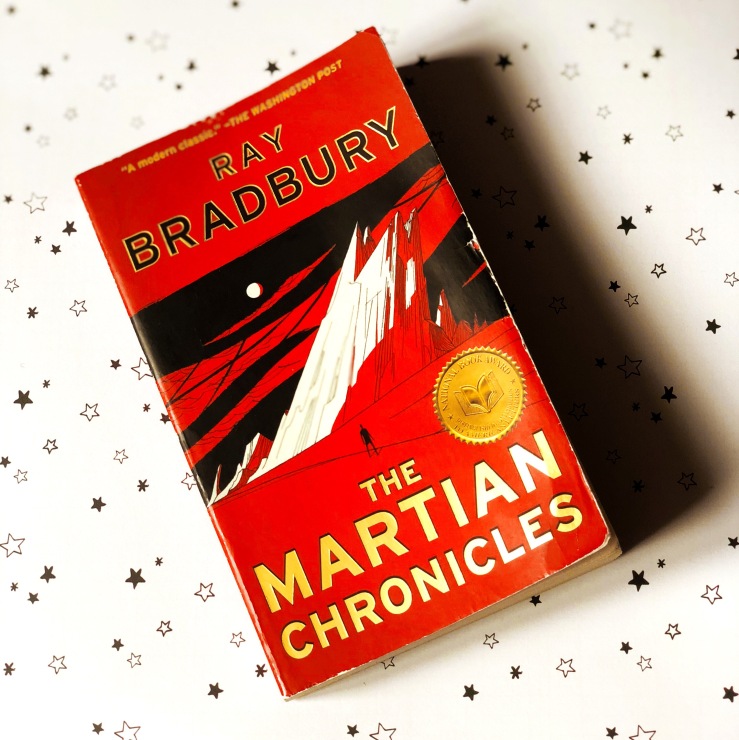
Para el reto de Monthly Motif de agosto teníamos que leer un libro o un autor premiado. Así que decidí leer Crónicas marcianas de Ray Bradbury, quien ganó muchísimos premios y reconocimientos.
La primera vez que leí a Ray Bradbury estaba en la secundaria, tendría 11 o 12 años y leímos “By the Waters of Babylon”, de Stephen Vincent Benét. Recuerdo muchísimo ese capítulo de mi libro, de mi clase de Literatura en inglés, con mi maestra favorita. Además de esa increíble historia, que me hizo tener una de mis primeras experiencias realmente literarias, estaba también “There Will Come Soft Rains”, que se convertiría en uno de mis cuentos favoritos, sin saber que formaba parte de Crónicas marcianas.
Como tenía que escoger un clásico del siglo XX también, para el reto de Back to Classics, decidí finalmente hacerle caso a mis Crónicas marcianas, que estaba guardando polvo en mi librero. Y como mi edición tiene un sello de “National Book Award, Distinguished Contribution for American Letters”, también valía para el reto de Monthly Motif.
Este libro narra la colonización de Marte a través de cuentos ligeramente conectados y en orden cronológico. Todo empieza con uno que es más bien una imagen hermosa, “El verano del cohete”, donde se describe cómo el invierno se convirtió en verano por un momento, debido a los motores de los cohetes de la primera expedición.
Después conocemos a los marcianos y su avanzadísima civilización y luego, a las siguientes expediciones, que fracasan hasta que los marcianos se contagian de varicela y su población se acaba, prácticamente. Por supuesto que muy temprano en la narración, deja de ser esperanzador. Todas las características de la humanidad, terribles y dolorosas, siguen en Marte…
Todo el libro es maravilloso, aunque hay algunas joyas que merece la pena resaltar. Por supuesto, “Usher II”, una oda a Edgar Allan Poe que no tiene parangón; “Encuentro nocturno”; “Un camino a través del aire”, que en una edición subsecuente lo sacaron, por alguna razón que no entiendo (probablemente por el uso de la palabra “negro”); y, por supuesto “Vendrán lluvias suaves”.

